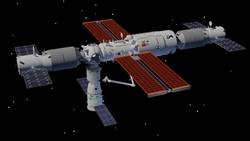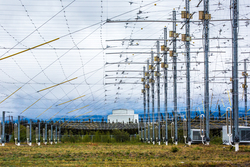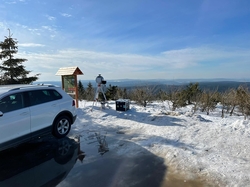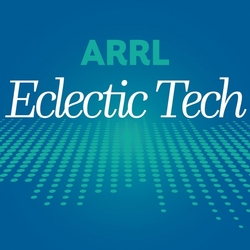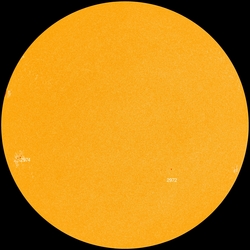 March 24, 2022 John E. Ross, KD8IDJ, Editor
| ||||||
New Amateur Radio License Applications Fee To Become Effective April 19, 2022
Effective April 19, 2022, a $35 fee will apply to applications for a new Amateur Radio license, modification (upgrade and sequential call sign change), renewal, and vanity call signs. Anticipating the implementation of the fee in 2022, the ARRL Board of Directors, at its July 2021 meeting, approved the "ARRL Youth Licensing Grant Program." Under the program, ARRL will cover a one-time $35 application fee for license candidates younger than 18 years old for tests administered under the auspices of the ARRL Volunteer Examiner Coordinator (ARRL VEC). Qualified candidates also would pay a reduced exam session fee of $5 to the ARRL VEC. ARRL is finalizing details for administering the program.
ARRL Volunteer Examiner Coordinator (ARRL VEC) Manager Maria Somma, AB1FM, explained that all fees are per application. "There will be no fee for administrative updates, such as a change of mailing or email address. The fees will be the responsibility of the applicant regardless of filing method and must be paid within 10 calendar days of FCC's receipt of the application. For applications filed by a VEC, the period does not begin until the application is received by the Commission, a ULS file number assigned, and an email sent by the FCC directly to the applicant." VECs and Volunteer Examiner (VE) teams will not collect the $35 fee at license exam sessions. New and upgrade candidates at an exam session will continue to pay the $15 exam session fee to the ARRL VE team as usual, and pay the new, $35 application fee directly to the FCC by using the CORES FRN Registration system (CORES - Login). When the FCC receives the examination information from the VEC, it will email a link with payment instructions to each successful candidate who then will have 10 calendar days from the date of the email to pay. After the fee is paid and the FCC has processed an application, examinees will receive a second email from the FCC with a link to their official license or explanation of other action. The link will be good for 30 days. Somma also explained that applications that are processed and dismissed will not be entitled to a refund. This includes vanity call sign requests where the applicant does not receive the requested call sign. "The FCC staff has suggested that applicants for vanity call signs should first ensure the call signs requested are available and eligible for their operator class and area, and then request as many call signs as the form allows to maximize their chances of receiving a call sign." Further information and instructions about the FCC Application Fee are available from the ARRL VEC at www.arrl.org/fcc-application-fee. Details for the ARRL Youth Licensing Grant Program will be similarly posted there, when available. Ham Payload Going to the Chinese Space Station
The International Amateur Radio Union (IARU) satellite frequency coordination panel reports that an application has been submitted for an amateur radio payload to be hosted on the Chinese Tiangong space station. The coordination request states: "CSSARC is the amateur radio payload for Chinese Space Station, proposed by Chinese Radio Amateurs Club (CRAC), Aerospace System Engineering Research Institute of Shanghai (ASES) and Harbin Institute of Technology (HIT)." The first phase of the payload is capable of providing the following functions utilizing the VHF/UHF amateur radio band: 1) V/V or U/U crew voice 2) V/U or U/V FM repeater 3) V/V or U/U 1k2 AFSK digipeater 4) V/V or U/U SSTV or digital image The payload will provide resources for radio amateurs worldwide to make contacts with onboard astronauts or communicate with each other. It will also play a role to inspire students to pursue interests and careers in science, technology, engineering, and math, and to encourage more people to get interested in amateur radio. The planned launch from Wenchang is scheduled for the third quarter of this years. - Thanks to AMSAT UK HAARP On The Air
The High-frequency Active Auroral Research Program (HAARP) will be supporting the NASA Sounding Rockets Program Office (SRPO) Ion-Neutral during Active Aurora (INCAA) mission by providing an additional non-co-located ground-based sensor. HAARP will concurrently be conducting an HF ocean scatter experiment. Actual transmit days and times are highly variable based on real-time ionospheric conditions and the Poker Flat Research Range launch window. The following schedule is subject to change, and all transmissions will take place on 6.8 MHz. INCAA Launch Support Window 0500-0700 UTC, 24 March through 02 April inclusive 1230-1430 UTC, 03 April through 07 April inclusive Ocean Scatter Window 0712-0722 UTC, 23 March 0819-0829 UTC, 24 March 0743-0753 UTC, 25 March 0707-0717 UTC, 26 March 0848-0858 UTC, 26 March 0731-0741 UTC, 27 March 0813-0823 UTC, 27 March 0737-0747 UTC, 28 March 0702-0712 UTC, 29 March 0626-0636 UTC, 30 March 0807-0817 UTC, 30 March 0732-0742 UTC, 31 March 0656-0706 UTC, 01 April 0620-0630 UTC, 02 April 0802-0812 UTC, 02 April To request a HAARP QSL card, send reception reports to: HAARP A New World Distance Record at 134 GHz
On March 2, 2022, Michael Kuhne, DB6NT, and his son Matthias, DK5NJ, established a new world distance record at 134 GHz by making contact using CW over 157 kilometers (98 miles) between the summits of two mountains in Germany. The portable microwave stations were located on Schneekopf mountain in the Thuringian Forest and atop Fichtelberg mountain near Oberwiesenthal. Check out the video of the record-breaking contact. ARRL Podcasts Schedule
The latest edition (Episode 56) of the Eclectic Tech podcast features a conversation with Steve Allen, KC1SA, about circuit simulation software. The On the Air and Eclectic Tech podcasts are sponsored by Icom. Both podcasts are available on iTunes (iOS) and Stitcher (Android) as well as on Blubrry. The K7RA Solar Update
Tad Cook, K7RA, Seattle, Washington, reports: Solar and geomagnetic activity were much quieter over the reporting week, March 17-23. Average daily sunspot number declined by more than half, from 74.6 to 33.4, and average daily solar flux from 119 to 99.9. On Wednesday March 23 Spaceweather.com reported a large emerging sunspot crossing our sun's eastern limb. Predicted solar flux is 105 on March 24-25, 110 on March 26-30, 115 on March 31, 120 on April 1, 115 on April 2-5, 125 on April 6-9, 115 and 110 on April 10-11, 105 on April 12-13, then 100, 95 and 95 on April 14-16, 100 on April 17-18, 101 on April 19, 102 on April 20-22, 100 on April 23-24, and 110 on April 25-26. Predicted planetary A index is 15 and 10 on March 24-25, 5 on March 26-20, then 10. 25, 15 and 8 on March 31 through April 3, then 5 again on April 4-16, then 12, 8, 10 and 8 on April 17-20, and 5 on April 21-26. Sunspot numbers for March 17 through 23, 2022 were 53, 27, 29, 39, 30, 29, and 27, with a mean of 33.4.6. 10.7 cm flux was 102.8, 97.8, 94, 95, 98, 106, and 106, with a mean of 99.9. Estimated planetary A indices were 6, 4, 5, 9, 4, 9, and 7, with a mean of 6.3. Middle latitude A index was 6, 3, 6, 11, 4, 7, and 6, with a mean of 6.1. A comprehensive K7RA Solar Update is posted Fridays on the ARRL website. For more information concerning radio propagation, visit the ARRL Technical Information Service, read "What the Numbers Mean...," and check out the Propagation Page of Carl Luetzelschwab, K9LA. A propagation bulletin archive is available. For customizable propagation charts, visit the VOACAP Online for Ham Radio website. Share your reports and observations.
In Brief... The Bavarian Contest Club has temporarily ceased its plaque sponsorship for the upcoming CQ Worldwide WPX SSB and CW Contests. This includes four plaques for the Rookie and Youth category overlays. The Bavarian Contest Club is also sponsor of four other plaques in CQWW DX Contest and CQWW RTTY DX Contest. This sponsorship will be evaluated at a later time. A statement (March 21, 2022) has been posted in both German and English. The European Conference of Postal and Telecommunications Administrations (CEPT), has suspended the Russian Federation and Belarus from CEPT membership, in a March 17 announcement. It was requested by CEPT members. The suspension, which took effect March 18, is indefinite. In the CEPT Assembly there were 34 supportive responses to the proposal, and one abstention. Future readmission will need a two-thirds majority vote. ARRL Member Joe Rudi, NK7U, will be Contest Dinner speaker during Dayton Hamvention® 2022. Read about NK7U's contest operations. The Contest Dinner will take place on Saturday evening, May 21, 6:30 PM at the Hope Hotel. Tickets are still available at contestdinner.com. ARRL Member John Sluymer, VE3EJ, will be the Top Band Dinner speaker during Hamvention. The dinner will be held on Friday night, May 20, at 6:30 PM at the Hope Hotel. Tickets are available at topbanddinner.com. The Kohler Presidential Banquet Center is located at 4548 Presidential Way, Kettering, Ohio - about 20 minutes away from the Greene County Fairgrounds. You can register for the banquet online at www.amsat.org/product/amsat-tapr-joint-hamvention-banquet-registration/. The Daily DX reports the passing of Yasuo Zorro Miyazawa, JH1AJT, after a battle with cancer. Zorro, an ARRL member, had been involved in many DXpeditions to some of the rarest locations. He also provided financial support for DXpeditions. Zorro was the founder of SEISA Group and Foundation for Global Children (FGC). He was deeply involved in humanitarian projects in Cambodia, Bangladesh, Japan, Myanmar, Eritrea, and Bhutan. Zorro was inducted into the CQ DX Hall of Fame in 2015 and CQ Amateur Radio Hall of Fame in 2020.
Upcoming Section, State, and Division Conventions
Search the ARRL Hamfest and Convention Database to find events in your area. Just Ahead in Radiosport
Search the ARRL Contest Calendar for more. Have News for ARRL? Submissions for the ARRL Letter and ARRL News can be sent to news@arrl.org.
Subscribe to...
| ||||||
 A Public Notice released by the Federal Communications Commission (FCC) on March 23, 2022, in
A Public Notice released by the Federal Communications Commission (FCC) on March 23, 2022, in -Blue.jpg)
